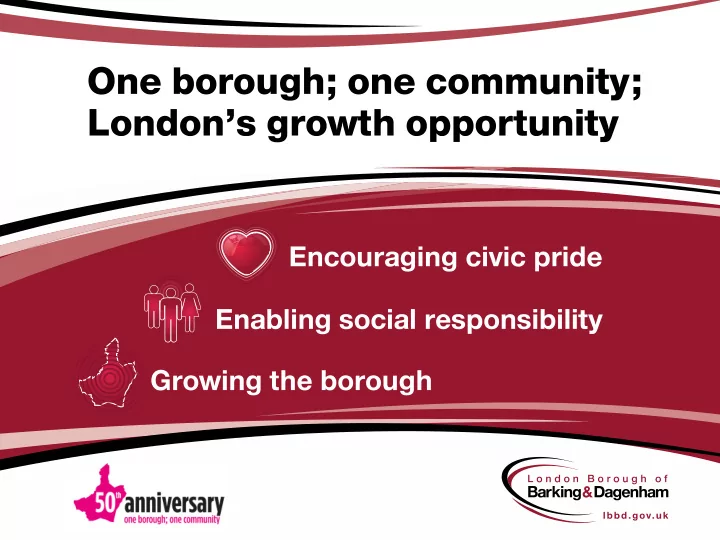

Homelessness Strategy 2016-2021
• What is homelessness? • A person is homeless if they have no accommodation available for occupation/threatened with homelessness if they are likely to become homeless within 28 days • Statutory homelessness – people who have made a homelessness application, met the legislative criteria, accepted by the Council as eligible for assistance, homeless and in priority need • Non-statutory/non-priority homelessness – usually single people/childless couples assessed as not priority need but entitled to ‘advice and assistance’ • Rough sleepers – ‘roofless’ and bedded down in the open air, sofa -surfing or ‘hidden’. No statutory duty/non -priority but strong policy ethos to tackle
1. Need for a homelessness strategy • Homelessness Act 2002 – five yearly review of homelessness trends • Planning services for the next five years requires an appreciation of the emerging trends, balanced against diminishing resources: Welfare reform phase 2 Local authority resources squeezed Loss of PRS, squeezed supply Prevention initiatives/self-resolution critical Parental ejection rising Housing advice services need integrated and creative Rough sleeping increasing Resources need to be targeted at most acute circumstances Priority need lone parent Robust partnerships with external/third households up sector required Demand for supported people Innovation in housing supply/choice housing choice essential
2. The Policy Context • No Second Night Out 2011, Cost of Homelessness Report and Making Every Contact Count 2012 – improving/integrating services • Welfare reforms – impact on ability to pay rent • Localism Act 2011 – allocations policy and discharge of duty into PRS • Local strategies and corporate programmes
3. Homeless Review • Impact of welfare reform, public funding reductions and challenging housing market have heightened demand for housing advice services from 2012 onwards • Approaches to John Smith House doubled in 2015 to 3,000 • Decisions on homelessness increased from 1,790 to 1,900 in 2014/15 • Acceptances for homelessness fell from 853 to 764 in 2014/15 • Preventions fell from 2,181 to 1,947 in 2014/15
4. Approaches, decisions and acceptances 3500 3000 2500 2000 Approaches Decisions 1500 Statutory acceptances 1000 500 0 2010/11 2011/12 2012/13 2013/14 2014/15
5. LBBD key figures – Homelessness reasons Reasons 2010/11 2011/12 2012/13 2013/14 2014/15 Parental/familial/friend breakdown 122 77 277 207 316 Violence 24 27 62 48 44 Harassment 1 2 7 7 1 Mortgage arrears/repossession 5 4 16 20 6 Rent arrears (LA/RP/PRS) 9 12 45 23 10 Loss of rented accommodation 42 59 193 341 357 Left care/hospital/custody 10 1 24 32 22 Other loss of settled home 8 18 40 25 8 221 199 664 853 764
6.Homeless prevention 2010/11 2011/12 2012/13 2013/14 2014/15 516 724 1,856 2,181 1,947 • Resolving housing benefit issues a major intervention in between 62%- 80% of cases • Other interventions by the Housing Options Service: -mediation/conciliation -debt advice and tenancy sustainment/HART team -Sanctuary scheme for domestic violence -mortgage arrears interventions/rent deposit - employment and skills support - fostering personal responsibility and self-reliance
Obj.1: Reducing demand through prevention Outcomes: • Homelessness prevented through housing support, advice and initiatives for vulnerable/at risk households • Encouraging self-resolution of housing crises • Co-ordinated multiagency interventions to assist households affected by welfare reform • Increased access to employment support for families and young people
Obj.2: Enabling pathways away from homelessness Outcomes: • Re-established Homelessness Forum • Successful partnership with voluntary sector and external providers supporting those suffering homelessness • Greater tenancy sustainment across all tenures • More effective identification of hidden homelessness, in particular rough sleepers and LGBT person • Utilised external partnerships to support vulnerable single persons who are homeless
Obj.3: Creating integrated services at first contact Outcomes: • Gold Standard accreditation for housing options service • Co- ordinated ‘single pathways’ protocols, processes and mapping between services • Development of one-stop shop approach to housing services such as HousingPlus model • Joint commissioning of services to provide seamless housing options to all clients
Obj.4: Provide appropriate accommodation Outcomes: • Creation of new affordable housing supply • Maximised use of own assets for temporary accommodation • Reconfigured portfolio of hostel accommodation • Professional private sector solutions including a local lettings agency • Increased housing choice for supported people
Recommend
More recommend